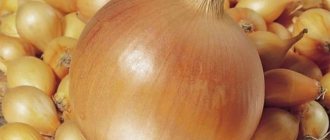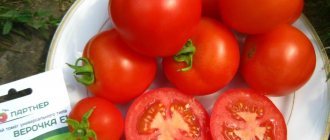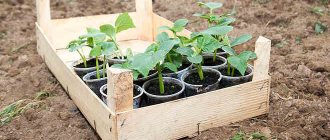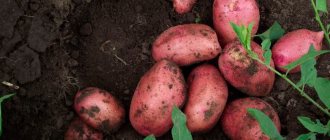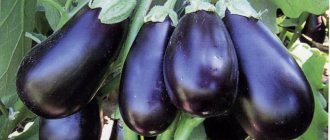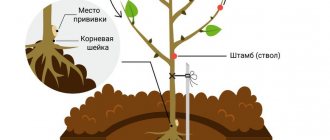Description of dill Kibray
Dill of the Kibray variety, a photo and description of which is given below, is valued for its pronounced aroma and excellent yield. It is characterized by long-term preservation of the juiciness of the leaves, which is important during the period of mass procurement of vegetables.
The plant is tall - about 40-50 cm, erect. The stem is powerful and at the same time very juicy, non-woody. The leaf rosette has from 10 to 12 strongly dissected leaves. The leaves are large, up to 20-25 cm long. The leaf width is about 15 cm. The color of the foliage ranges from light green to rich green shades with a slight waxy coating. Multi-rayed, convex umbrellas appear towards the end of the growing season.
Dill of the Kibray variety has excellent taste. The taste is pronounced spicy, slightly sweet. But this variety is especially famous for its strong aroma. Presentation and keeping quality are good.
The plant's disease resistance is at an average level. May be affected by powdery mildew at the end of summer.
Planting and caring for Kibray dill will not take much time. Even people taking their first steps in growing vegetables and fruits can easily get a good harvest of healthy and aromatic greens.
Advantages and disadvantages
The benefits of greenery include:
- good yield;
- high product and taste qualities;
- universal use of dill;
- the ability to grow in open ground;
- the ability to be widely used as a prevention and treatment for various pathologies;
- contains a large number of useful substances.
See also
Description and rules for growing dill variety Gribovsky
Read
Dill has no significant disadvantages, except for low drought resistance, which is acceptable for all types of crops. Gardeners also believe that the disadvantage of Kibray is its late ripening period.
Planting and caring for Kibray dill
Kibray dill is planted both separately and next to some vegetable crops. This variety prefers fertile, loose soil and well-lit places.
The best predecessors for growing Kibray dill are legumes. Their roots perfectly loosen the soil and enrich it with oxygen.
The variety is used for planting in areas that need rest after many years of crop rotation. In this case, it is better to prepare the beds in the fall. The soil is dug up and humus is added at the rate of one bucket per 1 m². Or pour plenty of infusion of mullein or bird droppings.
In spring, the soil is loosened and ridges are formed. Sowing is carried out in early May in well-moistened furrows up to 2 cm deep. The optimal distance between rows is 30 cm, between plants 15-20 cm. The plantings are mulched on top with a mixture of peat and sand. The plantings are not watered, but the top layer of soil is lightly sprinkled so as not to wash out the small seeds. It is not recommended to sow Kibray dill using the continuous method to avoid the labor-intensive thinning procedure.
Interesting fact! If you plant Kibray dill among cabbage, cucumbers or potatoes, then its powerful bushes will not only get along well with its neighbors, but will also repel pests from them.
The seeds germinate in about two weeks. Seeds pre-soaked for a day in warm water will sprout 5-7 days earlier.
Caring for Kibray dill after planting consists of timely watering, weeding and loosening the soil.
Landing rules
When choosing a place to sow dill, you need to give preference to open, well-lit areas.
Time
Since Kibray is a cold-resistant crop, planting can be done when the soil warms up to +3 degrees and the air to +8-10.
Usually the crop is planted in early April, as soon as the snow melts, or at the end of May.
Seed selection and preparation
For better seed pecking, they are pre-prepared. You need to place them in gauze, lower them into hot water at +60 degrees for 2 minutes. Afterwards, the seeds are placed in water for 2 days at room temperature. Every 8 hours the liquid is changed and the seeds are washed.
After soaking, the seeds need to be dried in a dark place.
Soil and site
The area for sowing is prepared in the fall:
- Cleared of remnants of vegetation.
- Digging up.
- Fertilized with nitrate, potassium salt, superphosphate.
You can also use humus and chicken manure for feeding. Before sowing in the spring, the soil is loosened and moistened.
Sowing pattern and depth
To sow seeds, form a depression 5 cm wide and 2-3 cm deep, the distance between the strips is 25 cm. The placed seeds are sprinkled with earth. For 1 sq. m requires 15 g. seeds
Favorable and Undesirable Neighbors
It is not recommended to plant dill next to carrots, parsley, and caraway seeds. Goes well with potatoes, onions, cabbage, cucumbers, and garlic growing nearby.
See also
Description of the best varieties of dill for open ground and for greens, what the plant looks like
Read
Reviews of dill Kibray
Tamara, 30 years old, Voronezh I have not been involved in growing dill. Last year, on my mother’s advice, I planted some Kibray dill seeds among the cabbage. And I was surprised myself. There were much fewer pests on the cabbage. But all summer I spoiled my family with delicious salads and fresh potatoes with new dill. And the sunsets with him are simply delightful.
Anna, 58 years old, Kashira Dill Kibray is a real lifesaver. Doesn't take up much space. And there is enough abundant greenery for both me and the children. And there is still some left for sale. People willingly buy bunches of greenery at the market: the large leaves look great and smell very good.
Care
Like any crop, dill requires care, although it is considered an unpretentious plant.
Watering
To prevent the crop from drying out and turning yellow, regular watering is required - once every 2-3 days. Moisten the plant in the evenings. It is better to use warm water, which is poured under the root.
Feeding
If the soil has been fertilized since the fall, then fertilizing is not needed. Fertilizers are applied if:
- leaves turn yellow;
- early flowering is observed.
These manifestations indicate a lack of nitrogen. The problem is eliminated by adding urea.
Soil care
The soil is loosened to improve the conductivity of moisture and air and prevent the formation of a hard crust. Loosen the soil after watering and precipitation with an interval of 2-3 weeks.
Weeds must be removed as soon as the crop emerges.
Pests and diseases: treatment and prevention
Powdery mildew affects dill beds. To exclude disease in the plant, use a weak solution of sulfur suspension for watering.
The plant suffers from aphids, which are eliminated with an alcohol solution.
Prevention measures.
- Planting greenery taking into account multiple fields.
- Digging the bed to a greater depth after harvesting the crop.
- Moderate watering of the beds.
Advantages and disadvantages
Main advantages:
- Large size and large number of leaves.
- Versatility of use.
- Persistent immunity to diseases and pests common among dill.
- Duration of crop storage.
- Cold resistance.
- Excellent product quality.
- High yield.
The disadvantages of the variety include:
- Low drought resistance.
- Requirement for fertilizing.
- The need for good lighting of beds.
- Late ripening of umbrellas.
Characteristics
Dill Bushy feels great throughout almost the entire territory of the Russian Federation. The main purpose of the variety is to produce juicy greens, although it is also used for other purposes. Contains vitamins and microelements that promote good digestion and overall strengthening of the human body. High aroma.
Bushy dill is harvested for bunch production starting from 40 days after germination. As a rule, by this time the bush grows to a height of 25-35 cm and forms 8-12 leaves. Up to 15-20 g of leaves or 2.2-2.5 kg per m2 are collected from one bush. The yield of dill Bushy spice is slightly higher and reaches 2.6-2.8 kg per m².
The tender greens of the Bushy dill are used as a seasoning for many dishes. Dill-based seasoning gives salads, sauces and first courses a special taste and rich aroma. Bushy dill seeds are also used in cooking, as they contain much more essential oils, so the aroma of the spices is more pronounced.
The description of Bushy dill notes that the variety does not like the temperature to drop too much. Sudden temperature changes negatively affect the overall crop yield.
Restricted watering also negatively affects plant productivity. Lack of moisture in hot summers will lead to wilting of the bushes, yellowing of leaves and stems, loss of taste and reduced aroma.
The lack of sufficient nutrition will not allow the plant to reveal all its genetically inherent qualities and will lead to a shortage of products.
"Pros and cons"
Dill Bushy is a universal and promising variety. Gardeners have already managed to appreciate its positive aspects. Judging by the reviews and photos, Bushy dill is confidently winning its place in the diet of Russians. Among the advantages of the variety are noted:
- high yield of young greens;
- the opportunity to receive fragrant bunched products within 40 days;
- strong pleasant aroma;
- good taste;
- universal purpose;
- does not lose taste, both fresh and frozen;
- resistance to powdery mildew.
Among the disadvantages are:
- demands on soil fertility;
- mandatory watering during the summer heat:
- does not tolerate too tight a fit;
- during periods of sharp temperature changes, it reduces productivity.
Attention!
To protect seedlings from sudden drops in temperature, it is recommended to cover dill plantings with agrofibre.
Features of culture
Most varieties of dill can germinate on any soil without requiring specific care. The main growing process consists of following a standard list of actions, namely:
- Periodic visual inspection to detect and eliminate weeds.
- Regular moderate watering.
- Loosening the soil.
- Timely collection of ripened greens.
- Correct selection of the previous culture.
- Maintaining spatial isolation in the beds.
The plant is actively used fresh in cooking, as well as as a decorative decoration for summer cottages and for preservation. When growing greens, you should know what different varieties look like, including perennial and one-season varieties. The main classification of the crop divides all known species into early-ripening, mid-ripening and late-ripening. Each category has individual features and characteristics.
Early
This group of dill includes varieties that enter the stemming and flowering phase 30-40 days after germination. Sow as soon as the soil thaws. Also, varieties of this species are recommended for sowing in the summer months to harvest good, tender greenery in early autumn. Plants are distinguished by a small number of leaves, only 5-6.
For consumption, it is cut off when it reaches a height of 10-15 cm. This dill is most often used in cooking at the beginning of summer and for homemade preparations, since, sown in early spring, it manages to produce seeds by the beginning of August.
The varieties of this group of dill are annual; the collected seeds of the best varieties can be scattered over open ground before winter in order to get early shoots on the site in the spring.
| Variety | To the greens | Collection of spices | Note | |||||
| Ripening, days | Plant weight, g | Productivity kg/sq.m | Ripening, days | Height, cm | Plant weight, g | Productivity kg/sq.m | ||
| Aurora | 25-35 | 10-14 | 2,-2,5 | Resistant to low light. | ||||
| Astoria | 35-40 | 15-18 | 2,8-3 | 76 | 90-100 | 35-50 | 3,5 | Heat resistant, high aromaticity. |
| Gribovsky | 35 | 12 | 2,5 | 70 | 80 | 30 | 1 | The most common. |
| Delon | 34 | 15 | 0,5-1 | 82 | 115 | 135 | 4-5,5 | High aromaticity. |
| Kaskelensky | 38 | 2,9 | 65 | 70-120 | 9 | 2,6 | Slowly progresses to stemming. |
New but already proven varieties are especially popular among gardeners. Next, you will find out what early varieties of dill are, read the description of Grenadier and many other good varieties.
Grenadier
This is a variety recommended for sowing in a greenhouse in early spring. Originator of agro. It takes 30-35 days to be ready for use. The variety is created for the use of herbs and spices. The dill bush, up to 30 cm high, is quite voluminous. The bright green foliage has large paws, succulent and tender.
Depending on the climate zone, sowing begins in April. Harvests are plentiful in various climatic conditions. An unpretentious variety, resistant to many diseases. From 1 sq. m, 3.1 kg of fragrant greenery is harvested; even in difficult weather situations, less than 1.4 kg/sq.m is not collected. When collected for spices, it yields a yield of 3-5.7 kg/sq.m.
Further
The variety is intended for sowing both in protected and open ground. Sowing begins in March-April, depending on the farming zone. A raised rosette 21-25 cm high is ready for harvesting for use as greens 38-40 days after germination.
The finished crop is harvested all summer. The yield of greens with a slight waxy coating is 2-2.5 kg/sq.m.
The variety is transportable. Weakly affected by diseases and pests, it is resistant to lodging. In addition, it is recommended for sowing in winter greenhouses.
Umbrella
The variety is distinguished by an early yield of 1.9-2.2 kg/sq.m. With good agricultural technology, it can grow up to 5 kg of aromatic greens. After the first harvest, the bush continues to form fragrant, juicy leaves throughout the entire period before harvesting for spices. The variety is ready to use leaves after 33-40 days, for seeds - after 62-85 days. The total yield of dill when harvested for spices is 3-3.4 kg/sq. m.
Redoubt
Ripens to greens in 39-41 days. Fragrant, feathery leaves form a raised rosette weighing 20-40 g. The mass of greenery is 1.2-1.23 kg/sq. m, when collecting spices - up to 2 kg/sq. m. Fragrant products are frozen for use in the winter.
Growing
Kibray is easy to grow and does not require special planting skills, so it is suitable even for novice gardeners. In Russian regions, in most cases, the variety is grown in beds by sowing seeds in open ground. The characteristics of dill classify it as a type of cold-resistant garden plant. Seeds begin to grow when the soil temperature reaches 3 °C. To ensure normal development of dill, a sufficient temperature regime of 8 to 10 ° C is required.
The basic rule for getting a good yield of greenery is that the plantings should not be made too dense. The following crops are considered the best predecessors for the plant:
- cucumbers;
- tomatoes;
- legumes;
- cabbage.
It is recommended to prepare a permanent planting site in the autumn. To do this, choose a well-lit area, dig up the soil onto the bayonet of a shovel and fertilize it. The best way to improve soil quality is considered to be a composition of the following components:
- 15 grams of ammonium nitrate;
- 10 grams of superphosphate;
- 10 grams of potassium salt.
A mixture of such components is applied to the soil in an amount of 3 kg for every 1 m2. In most cases, this amount of nutrients is enough for the entire growing season.
It is more effective for growing dill to form not stripes, but small grooves 5 cm wide with a depth of 2 to 3 cm, while the seeds are sown across the entire width. There is a distance of 25 cm between each furrow.
See also
How to properly freeze dill in the refrigerator for the winter and is it possible to Read
How to plant bushy dill
To obtain a good harvest, the soil is dug up in the fall and fertilized with compost or rotted manure. In the absence of organic fertilizers, complex mineral fertilizer is applied.
The bed is located in a sunny place where water does not stagnate. As for predecessors, it is necessary to avoid that dill grows after carrots, fennel, celery and parsley. These plants have the same pests and suffer from the same diseases, so the likelihood of a disease outbreak increases sharply.
Among the best predecessors of the Bushy dill variety are: potatoes, tomatoes, peppers and legumes.
Attention!
Dill does not tolerate even partial shading!
Bushy dill seeds are sown in late March early April, depending on the weather and growing area. Despite the fact that the plant tolerates a short-term drop in temperature to +4˚+6˚ C, it is still better not to rush into planting too early and wait until the air temperature warms up to at least +16˚+18˚ C. Optimal timing will allow the plants to develop faster and get higher yields.
As a preventive measure against fungal diseases, the seeds are disinfected with a solution of potassium permanganate, then dried and sown. Planting pattern for bushy dill 30 x 20 cm. To do this, furrows are made on the ridges every 30 cm and the seeds are placed at a distance of 3-5 cm from each other. Then the crops are sprinkled with earth, watered and, if possible, covered with film or agrofibre for several days.
Description of popular varieties, photos
Varieties of bush dill:
- Alligator - average ripening time (42-45 days for greens, 110-115 days for spices), stem height is about 1.6 m, the umbrella is formed late, cutting is carried out several times, the bluish-green leaf is very fragrant, large, feathery, the rosette of leaves is located high, from one bush you can collect from 30 to 150 g of greenery;
- Umbrella is mid-season (for greens it ripens in 41-44 days, for spices - in 86-90 days), the stem reaches a height of 1.8 to 2 m, the leaves are strongly dissected, collected in a semi-raised rosette, the diameter of the umbrella is 16-19 cm , the weight of greens from one bush is 18-20 g, the weight of spices is 35-40 g;
- Buyan - the height of the bush is no more than 0.6 m, ripening occurs in 60-75 days, the greens are rich dark green in color, aromatic, after cutting they are well stored for several days, the weight of one bush can reach 250 g, the yield is from 5 to 5, 5 kg/m², recommended to be grown in seedlings;
- Bushy - an early ripening variety of dill, height from 1.5 to 1.7 m, the first greens begin to be cut after 35-40 days, seeds are collected after 50-85 days, yield (greens) - 3 kg / m², in each rosette about 12 juicy dark green leaves with a waxy coating, low resistance to cold, so it is better to grow indoors;
- Kibray - reaches technical maturity after 40 days, light green leaf with a yellowish tint and a waxy coating, in a large rosette there are 10-12 leaves with a pronounced aroma, yield (greens) - 3 kg/m², can be sown;
- Bush miracle - the seedling method of cultivation is recommended, straight stems grow up to 1.1 m in height, the bush is voluminous, about 0.5 m in diameter, the dark green leaf contains a large amount of essential oils, juicy, tender, strongly dissected, yield - up to 5 .5 kg/m², has high immunity;
- Gourmet - low stem (30-35 cm), average ripening time, you can start cutting at 40-45 days, the leaf rosette is directed upward, the leaf is long (20 cm), fragrant, juicy, can withstand frosts down to -2 ° C, reseeding is possible several times per season;
- Dill is a bushy variety of medium ripening, you can start cutting it for greens after 25-30 days, the leaf is fragrant, small, sits on a short petiole, yield is 2-2.5 kg/m², blooms later, can be sowed;
- Herringbone - classified as a mid-season low-growing variety, cutting can begin after 30-35 days, the light green leaf with a bluish tint is juicy, tender, does not turn yellow for a long time and does not lose its aroma, yield is up to 3 kg/m², can be sowed;
- Goblin - height in open ground no more than 2 m, in closed ground it grows up to 3.3 m, the bush is heavily leafy, leaves with a pronounced aroma, juicy, dark green, yield (greens) - up to 9 kg/m², the first cutting is carried out at the beginning of summer;
- Moravan - can be harvested for greens after 50 days, for spices - after 100-105 days, medium-length leaf, dark green, compact umbel, greens are well stored for a long time;
- Russian size - the stems in closed ground reach 1 m in height, in open ground they grow up to 0.9 m, the diameter of the bush is about 0.5 m, the finely dissected leaf is dark green, fragrant, with a pronounced taste, the rosette is very large, tall resistance to temperature extremes and weather changes;
- Salute - stems grow up to 1 m, the bush is powerful, strong, the leaf on a long (16 cm) petiole is pinnate, dark green, with a purine coating, the leaf vertical rosette contains up to 30 leaves, can be cut for greenery on the 45th day, yield - 4 .8 kg/m².
Why dill does not grow and how to affect the condition of the greens
Prevention of diseases and pests
The Kibray variety is resistant to diseases and is not afraid of pests, but experienced gardeners advise not to forget about prevention, especially if dill grows next to other garden crops.
| Methods | Measures | |
| Agrotechnical |
| |
| Folk | From diseases |
|
| From insects |
| |
| Store | For spraying against diseases |
|
| From insects | Sprinkle the beds with tobacco dust - 1 tbsp. per sq. m. | |
Attention! Avoid using chemical remedies, as they are present in dill leaves and can be harmful to health.
Harvest and storage
They begin to cut the greens at a height of 8-10 cm. You can pick off individual leaves, cut out shoots along their entire length, or pull out bushes with roots if there is a need to thin out the plantings at the same time.
Features of collecting herbs:
- Dill is harvested for drying from the moment the bushes grow to 30 cm;
- the lacy foliage of an adult spice plant, 30-40 cm high, is collected for freezing and for preparing aromatic spices;
- the plant after flowering at the age of 2-2.5 months, 1 m high, is excellent for preparing seasoning;
- Umbrellas with seeds are collected after full ripening, when they acquire a characteristic gray tint and a dense coating.
Although Kibray is not grown for umbrellas, since they form quite late, the variety is also used for preserving preparations for the winter. Fresh leaves can be stored in the refrigerator for 30 days if vacuum-packed. Frozen greens are suitable for consumption until the next season's harvest, and when dried - for 2 years.
The most popular late-ripening varieties of dill
Late varieties of dill are ideal for obtaining lush greenery throughout the summer, as well as for growing on windowsills, due to the late ripening of seeds. Among the late-ripening ones there are many bush specimens.
Varieties of this type have a more aesthetic appearance, excellent aromatic and vitamin properties. Bush specimens are able to continuously provide the gardener with greenery without the need for repeated sowing. The yield of late-ripening bush varieties of dill is high and long-lasting. Among the most famous late-ripening ones we can list the following:
Dill variety "Kibray"
- The greenery is ready for harvesting 30–40 days after the first shoots appear. From germination to flowering of Kibray dill it will take from 55 to 72 days.
- This variety of dill is sown in late April–early May.
- The leaves are green in color with a slight yellow tint and a waxy coating.
- The greens are juicy and aromatic.
- The bushes of the plant reach up to 40 cm in height.
- Suitable for producing herbs and spices for homemade preparations.
- High-yielding. From 1 m2 you can get from 1.3 to 3 kg of greens.
- Dill "Kibray" has excellent reviews from gardeners and gardeners.
Dill variety "Salut"
- Bush type of dill. Stems and umbels appear late and poorly formed.
- Technical maturity for harvesting greens occurs 40–45 days after the appearance of the first shoots.
- Suitable for sowing before winter or immediately after snow melts.
- The plant is compact, suitable for growing on window sills; the height of the bush reaches a maximum of 35–40 cm.
- The leaves have a dark green color with pronounced dissection.
- Multiple harvesting is possible; one batch of sowing can be cut up to 3-4 times.
- High-yielding. For 1m2 you can get 4-4.5 kg of greens per season.
Dill variety "Borey"
- Dill of this variety is ready for harvesting in 40–55 days. Umbrellas with seeds ripen from 70 to 100 days.
- The leaves are dark green with a barely noticeable silver tint and reach a height of no more than 35 cm.
- It is possible to cut greenery repeatedly, which grows back quite quickly.
- Can be stored for a long time after collection and not turn yellow.
- It is considered one of the highest yielding. From 1 m2 you can collect up to 4.5 kg of greens.
Dill variety "Kutuzovsky"
- The variety is considered medium late.
- Technical maturity for harvesting greens occurs 41–44 days after the appearance of the first shoots.
- Bush 1 plant has from 10 to 12 leaves.
- The weight of 1 dill bush reaches 20–30 g.
- The greenery has a light green color with dissection into thread-like segments.
- Greens of this variety are suitable for freezing and drying for the winter, preparing seasonings, and using in pickling and pickling vegetables.
- The yield is average; from 1 m2 you can harvest from 1.4 to 2.3 kg of greens.
- There is no re-harvesting; after cutting, the greenery does not grow back.
- Differs in late flowering. Compared to dill varieties Lesnogorodsky and Gribovsky, umbrellas will bloom 2-3 weeks later.
Dill variety
- Dutch mid-early.
- From germination to technical maturity of greenery occurs in 35–45 days.
- Dill greens are suitable for making seasonings, using in pickling and pickling vegetables, freezing and drying for the winter.
- It is necessary to sow from late April to mid-May.
- The plant reaches 1.5 meters in height.
- Unpretentious and resistant to pests and diseases.
- It is distinguished by the slow formation of stems and long-term preservation of its presentation.
Dill "Alligator" characteristics and description of the variety, photo
Domestic gardeners often prefer this variety due to its versatility.
- Suitable for growing greens in a greenhouse, on a windowsill and in open ground.
- Multiple harvests of greenery are possible.
- Sowing in open ground is carried out from late April to mid-May.
- Mid-season bush type.
- From the emergence of seedlings to the first harvest of greens, an average of 40–45 days pass.
- The variety is distinguished by the long-term formation of umbrellas with seeds; in open ground they appear only towards the end of summer.
- The leaves are green with a barely noticeable bluish tint and a waxy coating.
- One bush of such dill weighs on average from 30 to 60 g, but can reach 100–150 grams.
- Medium-yielding, from 1 m2 you can get from 1.5 to 2.5 kg of fresh herbs.
